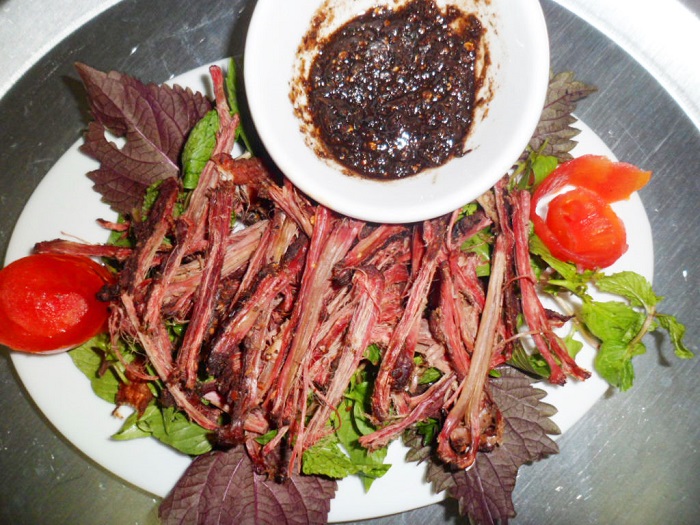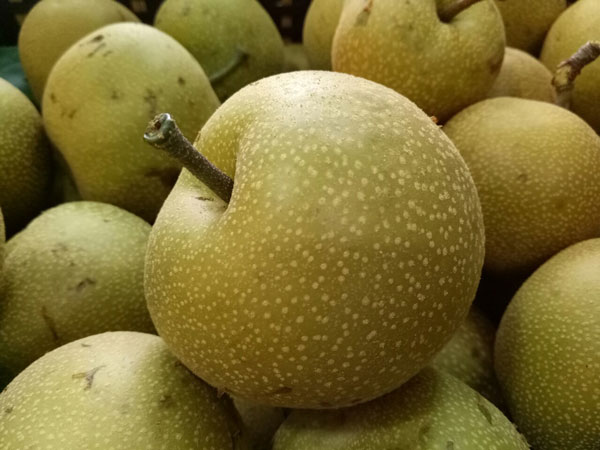Unique Foods That You Can Only Try in Sapa
Although characterized by its majestic scenery, cool weather, and outstanding culture, Sapa is also known as the heaven of food in the northwest of Vietnam. If you visit Sapa, in addition to enjoying the beautiful landscape, you must try the local food. Explore the special cuisine culture of this land and you’ll understand yet another trait that makes it outstanding.
Thang Co (horse meat soup)

Known as a horrifying food due to its extremely unpleasant odor, thang co is actually favored by many travelers, even a few are addicted to its very “special” smell! Thang co is a traditional dish of the H’mong people in Sapa and is believed to have first appeared more than 200 years ago.
Thang co literally means soup cooked in a big pan. The main ingredients are meat, bone, blood, and organs of the horse combined with more than 20 botanical herbs including cardamom, citronella, ginger, star aniseed, cinnamon twig, and Thang Co plant (special taste named after the dish’s name).
Com Lam (fried rice-in-bamboo-tube)

This is a cheap and delicious specialty of Sapa. Com means rice, lam is a word used by the Thai tribe, meaning fried. Com lam means fried rice, but this rice is special because it’s fried in bamboo tubes. Every restaurant and food stall in Sapa offers this dish.
In the past, life in northwestern Vietnam was so difficult that the tribal people didn’t have any saucepans or pots to cook with. Therefore, they came up with a method to cook the rice without a saucepan: bamboo tubes instead. First, the tubes are stuffed with salty sticky rice and water, then capped with banana leaves. The bamboo is then fried on a fire and continuously rotated until the rice is well cooked.
In Sapa, com lam is enjoyed with salted roasted sesame, grilled pork, or chicken skewers. The combination of the smell and taste of the ingredients make travelers want to take com lam home with them.
Thit Lon Cap Nach (free-range pig)

In Sapa, locals do not lock pigs up in a pen but let them free to find food in the forest and garden. This explains the special sweetness of Sapa’s pork that you can’t find anywhere else.
You might be wondering about the name of this dish: thit lon cap nach (literally means pig brought by armpit). Ranchers bring their pigs by the arms, under the armpits, to the market for sale, and the buyers bring them home in the same way. Thit lon cap nach is usually grilled or roasted. Roasted thit lon cap nach turns the color of honey, its skin is brittle and the meat inside is soft and sweet.
Thit Trau Gac Bep (dried buffalo meat)

Thit trau gac bep literally means buffalo meat hanging in the kitchen. This dish originated from the need to preserve food for the rainy season. The Black Thai people of Sapa marinate and then dry the buffalo meat in order to have food through the entire rainy season. The meat hangs from their kitchens for about eight months to a year. The buffalo meat is then lowered down to be grilled, stewed, and cooked into many dishes.
The smoke from the kitchen gives the meat a distinct smell. On the outside, the meat is dark brown, but the meat inside is bright red. It’s usually flavored with salt, pepper, garlic, and ginger. The first bite may be a little tough, but after that, you will savor the sweetness.
Mam Da (a kind of vegetable)

Mam da is harvested from November to March of the lunar calendar and it’s not easy to buy. It has a similar taste to Chinese broccoli but it smells better and tastes sweeter.
Typically, locals boil mam da. It can be dipped in fish sauce with an egg or salted and roasted in sesame. You should explore this way to eat mam da if you want to enjoy its original taste.
You should also try mam da pan fried with buffalo meat. When boiled, the sweetness of mam da dissolves in the water. When fried with buffalo meat, that sweetness infuses the meat.
In any restaurant in Sapa, you can order a dish of boiled mam da or fried mam da with buffalo meat.
Men Men Sapa (rice made of corn)

Men men is one of the most popular foods of the H’momg people made of corn. Making men men requires subtlety and patience because you must follow a picky recipe with many steps. After the crop harvest, H’mong people will grind the corn to remove the grit. This step used to take a lot of time because in the past the corn was hand ground but nowadays machines have replaced the laborious hand word. Once you have ground cornmeal, it’s put in a pan and mixed with a little water before cooking.
Apart from many other dishes, men men is steamed two times. After cooking, men men has a distinct sweetness and softness which can be eaten with bone broth and pumpkin soup.
Ga Den (black chicken)

It is said that when you visit Sapa, there is one thing you should not skip: trying the black chicken, one of the most delicious foods of Sapa.
In Sapa, black chickens rove free range, just like the pigs eaten in thit lon cap nach. The locals let the chickens feed themselves with natural food in the area, so their meat is fragrant and delicious, though the chicken itself is quite small. A black chicken just weighs approximately 1.2 kilograms and wears a delicate coat of black feathers.
Black chicken can be cooked into many dishes through frying, boiling, and steaming. However, I highly recommend eating grilled black chicken marinated with honey. After it soaks in honey, the chicken will be grilled directly on charcoal. The sweetness of the meat and of the honey combine, giving you an unforgettable experience.
Cuon Sui (dry pho)

Cuon sui or so-called pho khan is a dish that originated from the Chinese people living in Sapa. When you go into a restaurant and order cuon sui, a bowl with rice noodles, crispy roasted shallots, herbs, roasted peanuts, pepper, chili, beef, and a small bowl of flavored sauce will be whisked onto your table. The rice noodles used in this dish are very similar to ones used in pho, a symbol of Vietnamese food culture. The main difference is that pho has beef soup while cuon sui is eaten with flavored sauce, not soup.
To eat cuon sui, you need to pour the sauce into the bowl of rice noodles incrementally. Cuon sui is also served with fresh vegetables harvested in the area. Adding a little chili sauce will make the dish more delicious because with the cool weather of Sapa, eating spicy food can warm you up.
Mac Cop (Sapa’s pear)

Mac cop is a special fruit of Sapa. This kind of pear is usually harvested in September from the surrounding natural forests. You can visit the mac cop gardens and choose a tasty mac cop.
Because mac cop grows naturally without any pesticides or growing agents, it’s small and slightly unattractive. However, I encourage you to take a bite, savor the soft sour taste mixing with the sweetness of the pear. Not only does this fruit have an impeccable taste, it also has many health benefits. Eating mac cop is good for the digestive system, helping you absorb more nutrients. Moreover, it also helps decrease the risk of cancer, blood diseases, and liver diseases. Mac cop is an ideal gift for your friend and family.
Tao Meo Wine of Sapa (wine from assam apple)

Tao meo wine originated from the H’mong people and it’s very popular in Sapa as well as northwestern Vietnam. As the name suggests, it’s made from tao meo, assam apple, a kind of apple grown naturally on Hoang Lien Son Mountain. It’s harvested from August to October and you can buy fresh assam apple at that time, although it’s mostly used to make wine.
To make tao meo wine, assam apples are soaked in water and kept covered for days before fermentation. The wine is extracted after six to eight months. You can taste the natural flavor of the wine unique to this mountainous area. Tao meo wine is the perfect friend to join you on your food adventures of Sapa.


